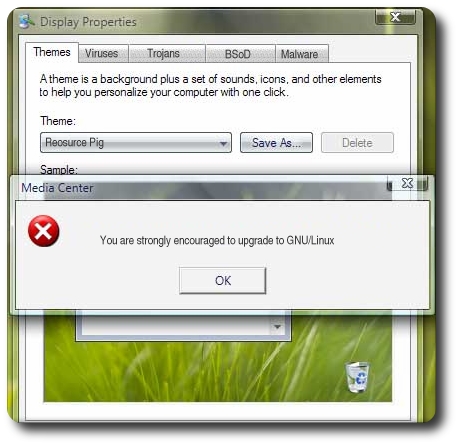Here is my first article in NewAssignment.net. The final version was polished and made more reader-friendly by David Cohn. Here is the initial essay (ramble-saturated draft as a matter of in fact) that was composed before further editing job.
On many levels, the process or collaboratively writing articles resembles the process of Open Source software development. Herein we investigate various aspects that demonstrate and exemplify the parallels between open-ended work on computer code, as well as on factual content which is controlled by a group.
1. Bug fixing in code equates to the process of peer review and fact checking in journalism
To use an example, Mozilla’s Bug-catching efforts are equivalent to fact checking. There are many similarities between these two processes. More eyeballs on the code (or articles) make bugs (or mistakes) shallow, to use Linus Torvalds’ famous statement.
2. Reuse and reproducibility of code versus exploration of content and public databases
With openness in mind, one is more interested in sharing. This leads to the idea of building upon prior or present work of others. That, as a matter of fact, is where the power of Open Source concepts and paradigms lies, particularly those which align with scientific motives (e.g. standing on the shoulders of giants to see further, to use Newton’s analogy). One of the strengths of Open Source-esque assemblage of information is that one can ‘massage’ content or code to better suit different purposes in different contexts.
3. Versioning, editions, fixes, patches, and corrections as spearate press releases
Open Source journalism opens the doors to, as well as encourages, versioning of content (revisions, changes, and rollbacks). Moreover, it can be passed among various minds, attracting more pairs of eyes which verify its validity. Consequently, material can be corrected before outrageous, inflammatory or errorenous information gets published. Once again, the argument revolves around peer moderation and review. Open Source is renowned for being a quick and reliable method for assessing work, thereby providing an almost-immediate quality assurance.
4. Expansion; no privatisation or ‘commoditisation’
Content which is open is available for extension since ownership becomes a ‘fluid’, so to speak, territory. Creative Commons licenses, for example, permit and accommodate derivative work with various defensive exceptions. It becomes a case where the “one-size-fits-all” myth is broken. Different authors and audiences seek accurate information with a different slant.
5. Code similarity, duplicability and linking
Popularisation and wealth of hyperlinks on the Web rids authors from this laborious need for dynamic references which are detailed, cluttered, and difficult to follow. Links obviate the need to repeat. With the vast size of the Web, however, concern also emerge with regards to reliability of information. On the other hand, the ability to follow links at ease makes it less necessary to reiterations that serve the reader the ‘leg work’. Similar information can be merged, inter/cross-linked and knowledge is thus forged to become more cohesive and centralised. Excess due to duplicability is the motivator to gathering information in a single place which—in turn—enables more eyes to view and correct mistakes. It is hardly surprising that collaboration and unification (much like standardisation) benefit all by improving the eventual outcome. These prevent waste, as well as reinventions and incarnations of the same wheel.
6. Monetised model — donate on investigations that appeal to you
Independence for the writer is analogous to the freedom of a freelance software developer. Financial interests can often be curtailed (albeit not necessarily so).
7. Recognition as motivator, money secondary factor
It is no secret that many reporters are overworked and underpaid. The reason for persistence, however, is often genuine interest, true personal involvement, and impact. The same can sometimes be said about software developers who seek to fulfil a goal, overcome perils, and address personal pet peeves. Satisfaction comes from a self-tailored product, be it an article or software. Eric Raymond calls this phenomenon “scratch-itching” software where each member of the development group addresses his/her own needed and desires. Ultimately, the requirements of the entire team provides the perfect software package which everyone is pleased with. Put differently, on average, its optimality corresponds to the involved group.
8. Audience judges and substantiates popularity, but quantity does not lead to higher cost of production
One of the key observation to make is that the cost of manufacturing an electronic code (text/information) are merely inexistent. They involve no physical raw material. Let us consider and set aside the exception: information is environment-friendly only if you neglect energy which only sometimes (e.g. random-access memory) persistently retains information and, in itself, requires combustion of material. A tiered Web (and the end of Net neutrality) could soon change this perception however.
Unlike the production of a paid of shoes, for example, replicating code (programs) is a money-independent process. It is only research and development that counts. Likewise, in electronic journalism, it is the effort of the group (e.g. time spent) that counts while no paper needs to be produced. Bandwidth limits aside, a successful story can reach a wide audience and received a lot of feedback (including corrections) without elevating any production/delivery costs.
9. Authorship/credit
It is a known fact that people’s own code (or product of composition) becomes their ‘baby’. With Open Source models, there remains an electronic trail which indicate who contributed which part of an article or program (e.g. SVN, CVS for version control). Thus, credit can be given to the rightful person or mistakes be traced back to the culprit — the one guilty of erroneous inclusions).
10. Editorial control, personal writing style/unification
Consistency is an important aspect of paper-based publications and code alike. It is important not to duplicate effort (e.g. similar/identical articles or multiple functions which achieve a similar goal). There needs to be supervision that relies on knowledge that is applied in a top-down direction.
In summary, there are several characteristics to Open Source software development which define and promote the concept of Open Source journalism. Key virtures that are sought by journalists can be backed by successful, established, and well-proven overlaps in software.
I have also put together a short bio for the site (mildly edited).
Bio: Roy Schestowitz is a Ph.D. Candidate in Medical Biophysics at Manchester University. While on the verge of completion he finds himself fascinated by endless possibilities which the World Wide Web offers; consequently, he often gets distracted and sidetracked. He advocates the use of Open Source technology in the public and private sector, as well as uses his background in computing to make personal contribution to the Free Software movement. In his spare time he engages in activities ranging from weights-related sports to easy-listening music.






 Filed under:
Filed under:  used to envision myself coding for the rest. Of. My. Life. many times I thought I had it all figured out. And nevertheless, experience suggests that preferences, trends and prospects always change. The industry nowadays is dynamic, volatile, and ever-changing. Thus, predictions that are long-term are utterly silly.
used to envision myself coding for the rest. Of. My. Life. many times I thought I had it all figured out. And nevertheless, experience suggests that preferences, trends and prospects always change. The industry nowadays is dynamic, volatile, and ever-changing. Thus, predictions that are long-term are utterly silly.



